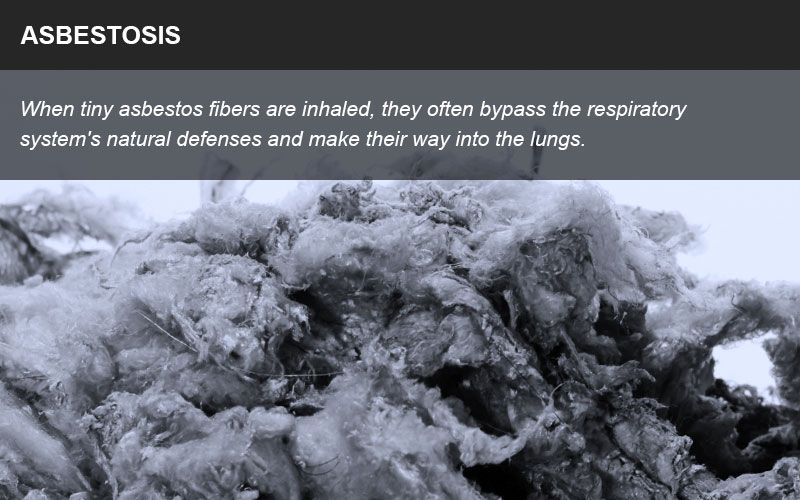Asbestosis
Asbestosis, also called pulmonary fibrosis and idiopathic interstitial pneumonitis, is a non-cancerous lung disease caused by asbestos exposure. When tiny asbestos fibers are inhaled, they often bypass the respiratory system's natural defenses and make their way into the lungs. An experienced asbestosis attorney in your area can help you understand your legal options.

Asbestosis Development
Over time, asbestos fibers may become embedded in the tiny air sacs, or alveoli, in the lungs where oxygen and carbon dioxide are exchanged between the blood stream and the lungs. Special immune cells attempt to envelop the foreign asbestos fibers but are unable to digest and carry away the particle.
Asbestosis develops when asbestos fibers become lodged in the lungs, causing inflammation and triggering the development of scar tissue. This scar tissue stiffens the lungs, making it difficult for air to flow in and out of them and ultimately, inhibiting breathing and causing a serious cough.
Asbestosis usually doesn't surface for at least a decade after asbestos exposure, and it is often misdiagnosed as lung cancer or other diseases. If you have been diagnosed with asbestosis, you may be at increased risk for other respiratory problems and are advised to avoid further asbestos exposure and to stop smoking.
If you are a victim of asbestosis, you may be entitled to damages. Contact an asbestos attorney who specializes in asbestos exposure-related illnesses in your area to find out more information
Asbestosis Symptoms
Symptoms of pulmonary asbestosis include:
- Shortness of breath
- Fatigue during exertion
- Fatigue during rest (in the latter stages)
- Crackling sounds in chest when breathing
- Chronic cough
- Reduced lung capacity
- Chest tightness
- Chest pain
- Run down or ill feeling
- Loss of appetite
Most of the symptoms of pulmonary asbestosis are not specific to the disease. Many of these symptoms are shared with more common illnesses. Since symptoms of asbestosis usually take decades to develop, a history of asbestos exposure should be disclosed to the physician so that he or she can make an accurate diagnosis of asbestosis.
Asbestosis can lead to deadly respiratory failure and it can also lead to cardiac failure if the heart can no longer be supplied adequate oxygen. Asbestosis weakens the lungs' natural immune system and can make the patient more susceptible to more common lung illnesses like pneumonia and the flu. For an asbestosis patient, common illnesses can be deadly.
Asbestosis Treatment
Treatment of asbestosis, like mesothelioma treatment, is most effective when the asbestos disease is caught early on. The first step in treating asbestosis is to immediately cease asbestos exposure. If the patient smokes, they should stop. The patient should also limit exposure to illnesses by avoiding crowds. Preventative treatment for lung illnesses can help patients maintain health.
Asbestosis progresses slowly so symptoms are usually the primary focus of treatment. Shortness of breath and cough are treated with supplemental oxygen, humidifiers and breathing therapy.
Find an Asbestosis Attorney
If you or a loved one has been diagnosed with asbestosis, you may be entitled to compensation. In many cases of asbestosis and mesothelioma, asbestos companies may be held liable for your asbestos injury. A qualified asbestos lawyer may be able to help you pursue an asbestos case.
Related to Asbestosis




